
Castle Combe is a village and civil parish in Wiltshire, England, about 5 miles (8 km) northwest of the town of Chippenham.
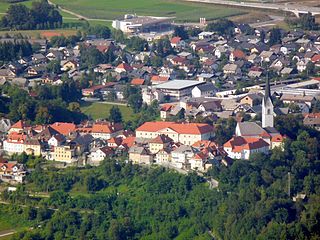
Radovljica is a town in the Upper Carniola region of northern Slovenia. It is the administrative seat of the Municipality of Radovljica.
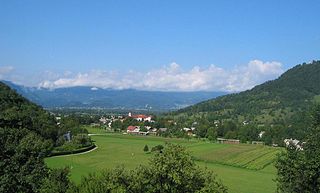
Begunje na Gorenjskem is a village in the Municipality of Radovljica in the Upper Carniola region of Slovenia. It is known for being the location of the headquarters of the Elan Line company.

Lullingstone Castle is an historic manor house, set in an estate in the village of Lullingstone and the civil parish of Eynsford in the English county of Kent. It has been inhabited by members of the Hart Dyke family for twenty generations including current owner Guy Hart Dyke.

Štanjel is a village in the Municipality of Komen in the Littoral region of Slovenia. It is located on the Karst Plateau overlooking the Vipava Valley. In the 17th century it was fortified to defend it against Ottoman raids. It was heavily damaged during World War II and it has been slowly rebuilt since.

While there are many castles in South Yorkshire, the majority are manor houses and motte-and-bailey which were commonly found in England after the Norman Conquest.

Jelenia Góra Valley in Poland is a big valley at the Silesian northern side of the Western Sudetes and next to Kłodzko Valley the largest intramontane basin of the Sudetes. It is situated at an altitude of 250–400 meters above sea level and covers an area of 273 km2. In the 19th century, the lovely landscape attracted the Prussian high nobility, which built magnificent palaces, manors and parks. The enormous number of stately homes turned the valley into one of the most important garden landscapes in Middle Europe.

Kropa is a settlement in the Municipality of Radovljica in the Upper Carniola region of Slovenia.

Hlebce is a village in the Municipality of Radovljica in the Upper Carniola region of Slovenia.
This article covers the architecture of Estonia.

Mošnje is a village in the Municipality of Radovljica in the Upper Carniola region of Slovenia.

Strmol Castle is a castle located at the foot of Dvorjanski hrib near the villages of Češnjevek, Grad and Dvorje, in the municipality of Cerklje na Gorenjskem, Slovenia. Named after its builders, the Strmol family, it is notable as one of the few castles in Slovenia to retain a Slovene name throughout its history. It is currently a guesthouse and conference site for the government of the Republic of Slovenia.

Volčji Potok is a village on a terrace on the left bank of the Kamnik Bistrica River in the Municipality of Kamnik in the Upper Carniola region of Slovenia.
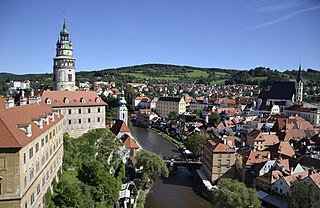
Český Krumlov is a town in the South Bohemian Region of the Czech Republic. Its historic centre, centred around the Český Krumlov Castle, is a designated UNESCO World Heritage Site since 1992 and was given this status along with the historic Prague castle district.

Dobrava pri Kostanjevici is a settlement on the right bank of the Krka River in the Municipality of Kostanjevica na Krki in eastern Slovenia. The area was traditionally part of Lower Carniola. It is now included in the Lower Sava Statistical Region.
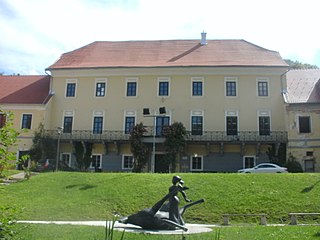
Trebnik Mansion is a manor house located in the park above the Archparish Church of St. George in Slovenske Konjice, Slovenia.
The Manor House is a 14th-century country house hotel in Castle Combe, Wiltshire in the south of England.

Pesniški Dvor is a settlement in the Municipality of Pesnica in northeastern Slovenia. It lies in the Pesnica Valley in the traditional region of Styria. The entire municipality is now included in the Drava Statistical Region.

Velenje Castle is a well-preserved castle in Velenje, Slovenia that was owned by the Kunšperk family, followed by their relatives the Ptujs and the Liechtenstein families. The castle houses a museum of art and culture.
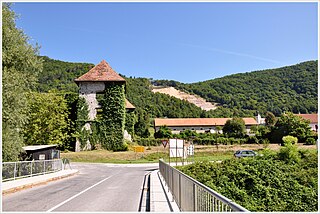
Soteska is a settlement on the left bank of the Krka River in the Municipality of Dolenjske Toplice in Slovenia. The area is part of the historical region of Lower Carniola. The municipality is now included in the Southeast Slovenia Statistical Region. Soteska includes the hamlet of Ključ southeast of the main settlement.


























